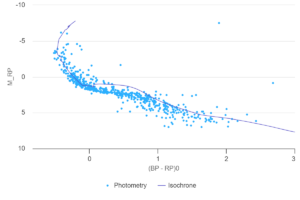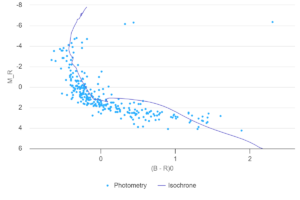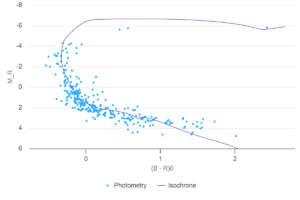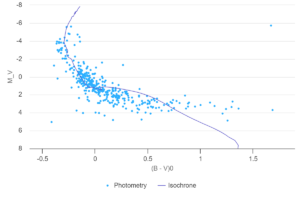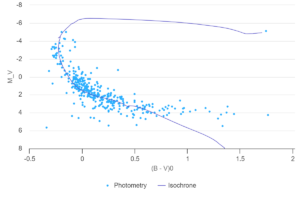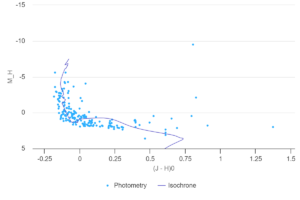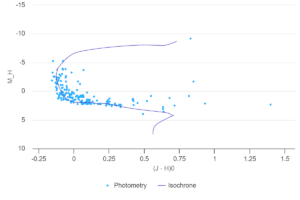NGC 3293 is a young cluster in the southern celestial hemisphere in the Carina constellation.
It was discovered by Nicolas-Louis de Lacaille in 1751 and is located about 8000 to 8400 lightyears away from us. Over 100 of the stars in this cluster are brighter than the 14th magnitude. Most of these are blue supergiants but it also consists of a few red giants with one prominent 7th magnitude red giant called V361 Carinae. This cluster is also called the Gem Cluster because of how its blue and red stars sparkle nicely in the sky from any telescope that can view it, reminiscent of a jewel box.
In a fairly recent study in 2022, a group of astronomers led by Thierry Morel of the University of Liège in Belgium conducted a spectroscopic analysis of NGC 3293 to investigate the properties of its stellar B-type population. They found that the cluster may be in fact older than it was thought to have been initially. Despite being dominated by blue giants, with the presence of the red giants, it may be as old as 20 million years instead of 12 million.
In order to study NGC 3293 further and investigate the relationships between the colours, brightnesses, and the age and chemical composition of the cluster as a whole, I collected 5 images in B, V, and R filters. I made these observations via Skynet using the Prompt 6 telescope in the Cerro Tololo Inter-American Observatory. Additionally, using Afterglow and Cluster Astromancer I discovered some of the properties of this cluster.
| B |
V |
R |
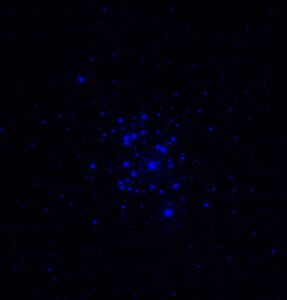 |
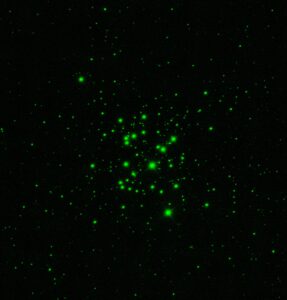 |
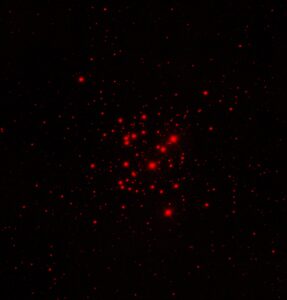 |
| Calibrated Time
(seconds) |
Recommended Time
(seconds) |
| 6.3 |
8 |
|
| Calibrated Time
(seconds) |
Recommended Time
(seconds) |
| 4.72 |
6 |
|
| Calibrated Time
(seconds) |
Recommended Time
(seconds) |
| 2.36 |
3 |
|
After creating colour images of my cluster using Afterglow, I got a good-looking image.
| Apparent Colour Image |
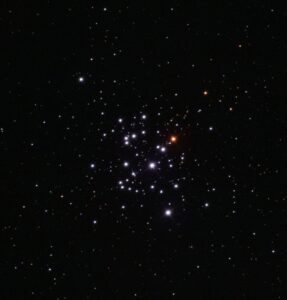 |
The purpose of this was to ascertain more accurate values for the purpose of further researching this cluster in the future. Through this experience, I was able to learn some of the methods that astronomers as well as others in the field work to retrieve more accurate data to improve on past findings that had less advanced technology to get a better understanding of the things that occur in our universe. This cluster in particular is quite bright so the exposure times are much shorter so as to prevent the images from being overexposed.
Most of the values I measured align with SIMBAD’s database. Additionally, this cluster was studied by Kharchenko et al (2013). However, using Cluster Astromancer, I created HR Diagrams to compare our values to see which parameters better fit the dataset and my measurements were more accurate.
| Kharchenko et al |
Mine |
| Distance (in kpc) |
2.441 |
| log(Age) |
6.75 |
| (10log(Age)) = Age in years |
5620000 |
| Metalicity |
0 |
| E(B – V) |
0.333 |
|
| Distance (in kpc) |
2.09 |
| log(Age) |
7.20 |
| (10log(Age)) = Age in years |
15800000 |
| Metalicity |
0.100 |
| E(B – V) |
0.250 |
|
Using my parameters, I created the final true colour image.
| True Colour Image |
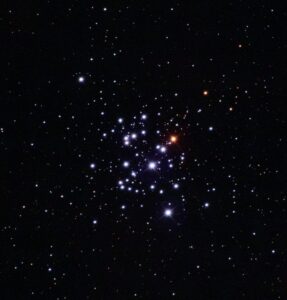 |
Upon finishing my analysis of this cluster, I was able to achieve a better understanding of this field and the process of data collection as well as the logic behind the analysis.
Read more "NGC 3293"




